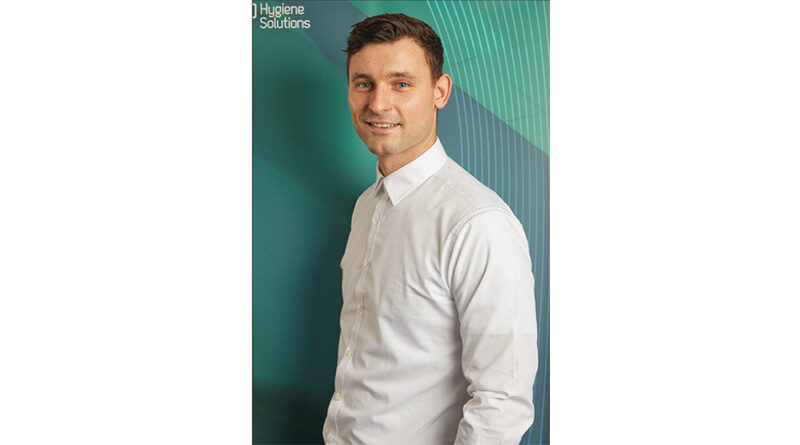Infection Control Lessons Learnt From The First Peak of COVID-19
By Tautvydas Karitonas, Head of Research and Development for Inivos (www.hygiene-solutions.co.uk)
The impact of the coronavirus pandemic on care facilities in the UK has been significant. To mitigate against the same situation reoccurring, here, Tautvydas Karitonas, Head of Research and Development for Inivos, outlines the infection control lessons care home staff can draw on from the first wave of the pandemic to ensure they are prepared for a second wave.
The coronavirus pandemic has claimed over forty-three thousand lives in the UK, with over 19,394 of these being care home residents.* With cases rising again and threats of a second peak looming, it is vital that care home managers and their employees establish new infection control measures to help prevent and control any further outbreaks.
Coronavirus (Covid-19) is a novel virus, which means it is difficult to predict how a second peak would develop and to what degree measures would need to be put into place. Therefore, as cases in care homes have already begun to rise, it is important to follow the infection control lessons learnt from the first peak to try to contain any further outbreaks.
ADOPT SAFER DECONTAMINATION STANDARDS
At the beginning of the coronavirus pandemic, manual deep cleaning was the recommended method to help control the spread of the virus. While it is still essential for care homes and hospitals to thoroughly deep clean rooms by hand, it has become increasingly apparent that manual cleaning alone can leave dangerous traces of the virus behind through unavoidable human error. Such errors can be avoided through the use of high-tech decontamination devices such those using hydrogen peroxide vapour (HPV) and ultraviolet-C (UV-C).
A group of care homes in Salisbury became the first in the sector to utilise UV-C decontamination technology to ensure patient areas were a safe space for residents. Specialist decontamination devices which use UV-C technology or HPV are frequently used already by over 40% of NHS Trusts as they are known to decontaminate spaces and reduce pathogens by up to 99.9999% – also known as >log 6 reduction.
The coronavirus pandemic has now begun to accelerate the adoption of these technologies into more care homes across the country, with many recognising the benefits of such technologies to create a safe environment for residents and their loved ones.
ENSURE SUFFICIENT LEVELS OF PERSONAL PROTECTIVE EQUIPMENT (PPE)
During the first wave of the pandemic, many care homes struggled to provide sufficient PPE for their healthcare workers as stock was prioritised for hospital staff. This meant that nurses and carers were expect- ed to look after some of the UK’s most vulnerable patients without efficient PPE to protect both them and their patient.
To ensure care homes are prepared in the event of a second peak, it is vital that health and social care workers plan-ahead and ensure PPE stocks will not run out.
A central part of the government’s coronavirus strategy is the test and trace system, where a person’s symptoms should be tested and their recent contacts traced, making it easier to control the virus. Nurses are not considered a close contact if they are wearing PPE therefore it is vital that any personal protective equip- ment is thoroughly decontaminated after each use to avoid the virus being passed on from nurse to patient or vice-versa.
HPV can effectively decontaminate micro-organisms on PPE that are significantly more resistant than COVID-19, without damaging the equipment.
University Hospital Southampton NHS Foundation Trust tested the feasibility of decontaminating used PPE gowns in a trial at the height of the pandemic. Inivos used HPV and applied this to laundered gowns to test its effectiveness in decontaminating single-use PPE for re-use. The result was that the process achieved satis- factory results of decontamination to enable thoroughly decontaminated PPE to be re-used.
Although it’s always important to have stocks of new, single-use PPE, to help prepare for a second peak, and in the case of PPE shortages, care homes should consider regularly decontaminating their PPE, like in hospitals, to ensure residents and staff are properly protected.
* Data obtained from the Office For National Statistics
Tautvydas Karitonas is a leading expert in harnessing decontamination technology to eliminate viruses, bacteria and other contaminants from hospitals, care homes and public spaces. In his role as Head of Research & Development, Tautvydas has led research and development into numerous pioneering solutions for virus out- breaks, including isolation pods, automated hydrogen peroxide vapour (HPV) and ultraviolet-C (UV-C) systems and decontamination wipes.

